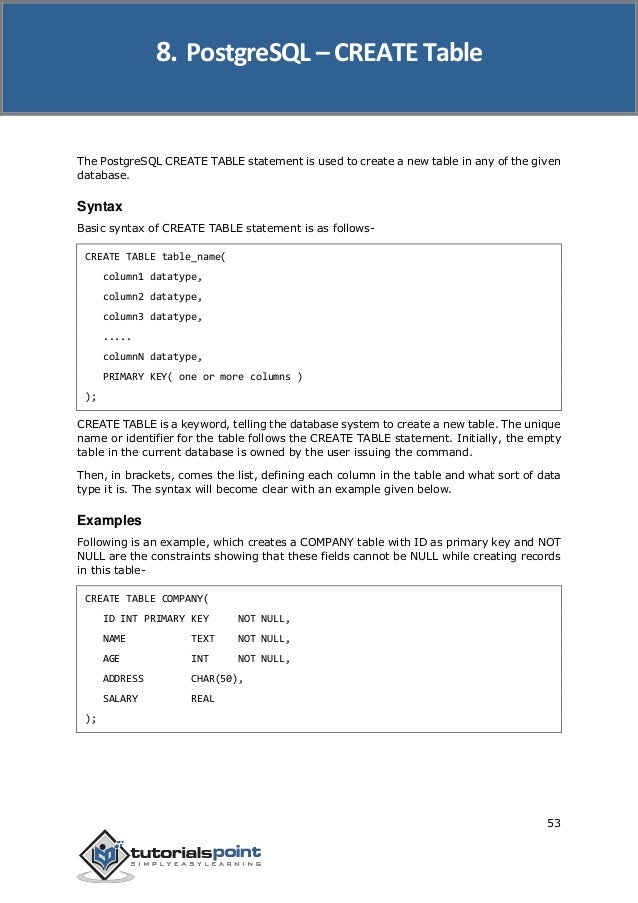

We can use it pretty much anywhere a valid expression can be used.įor example, we can use the CASE operator as part of an UPDATE statement when updating data in a database. The CASE operator isn’t limited to just SELECT statements. Using the CASE Operator in Other Contexts That’s because I set up psql to return that string for NULL values. In my case, NULL values are represented by the string. Let’s omit the ELSE clause from the first example: SELECT If we omit the ELSE clause, and none of the conditions are met, the result is NULL. The above examples use the ELSE clause to determine what happens if none of the conditions are met, however, the ELSE clause is optional. We could rewrite this to a searched CASE expression if we wanted. Here’s an example to demonstrate the simple CASE expression: SELECT The searched CASE expression evaluates a set of Boolean expressions to determine the result. The other option is the searched CASE expression: CASE
Case in postgresql plus#
The simple CASE expression compares an expression to a set of simple expressions to determine the result. 2 min read by Renato Losio InfoQ Staff Editor Cloud Expert AWS Data Hero Follow Google Cloud recently announced the Cloud SQL Enterprise Plus edition for MySQL and PostgreSQL of. One form is the simple CASE expression: CASE value It allows you to add if-else logic to the query to form a. The basic syntax for the CASE expression goes like this: CASE WHEN condition THEN resultĪctually, there are two forms of CASE expression. The PostgreSQL CASE expression is the same as IF/ELSE statement in other programming languages. The CASE expression is included in the SQL standard (ISO/IEC 9075), and most major RDBMSs support it. All of these are folded to n spaces in char(n) per definition of the type.In PostgreSQL, the CASE expression compares a list of conditions and returns one of multiple possible result expressions. In char(n) an empty string is not different from any other string consisting of only spaces. PostgreSQL provides you with the CAST operator that allows you to do this. In most situations text or character varying should be used instead.ĭo not confuse char(n) with other, useful, character types varchar(n), varchar, text or "char" (with double-quotes). There are many cases that you want to convert a value of one data type into another. ( char / character are short for char(1) / character(1).) Its use is discouraged in Postgres: This is about the data type char(n), short for: character(n). PostgreSQL Case Insensitivity In the CMP 2.1 runtime, PostgreSQL table and column names are not quoted, which makes these names case insensitive. coalesce(stringexpression, '') = ''īut the expressions at the top are faster.Īsserting the opposite is even simpler: " stringexpression is neither null nor empty": stringexpression '' Or use your original expression without trim(), which is costly noise for char(n) (see below), or incorrect for other character types: strings consisting of only spaces would pass as empty string.

Works for any character type including char(n). Or the reverse approach (may be easier to read): (stringexpression '') IS NOT TRUE

So to check for: " stringexpression is either null or empty": (stringexpression = '') IS NOT FALSE for '' (or for any string consisting of only spaces with the data type char(n)) The expression stringexpression = '' yields:


 0 kommentar(er)
0 kommentar(er)
